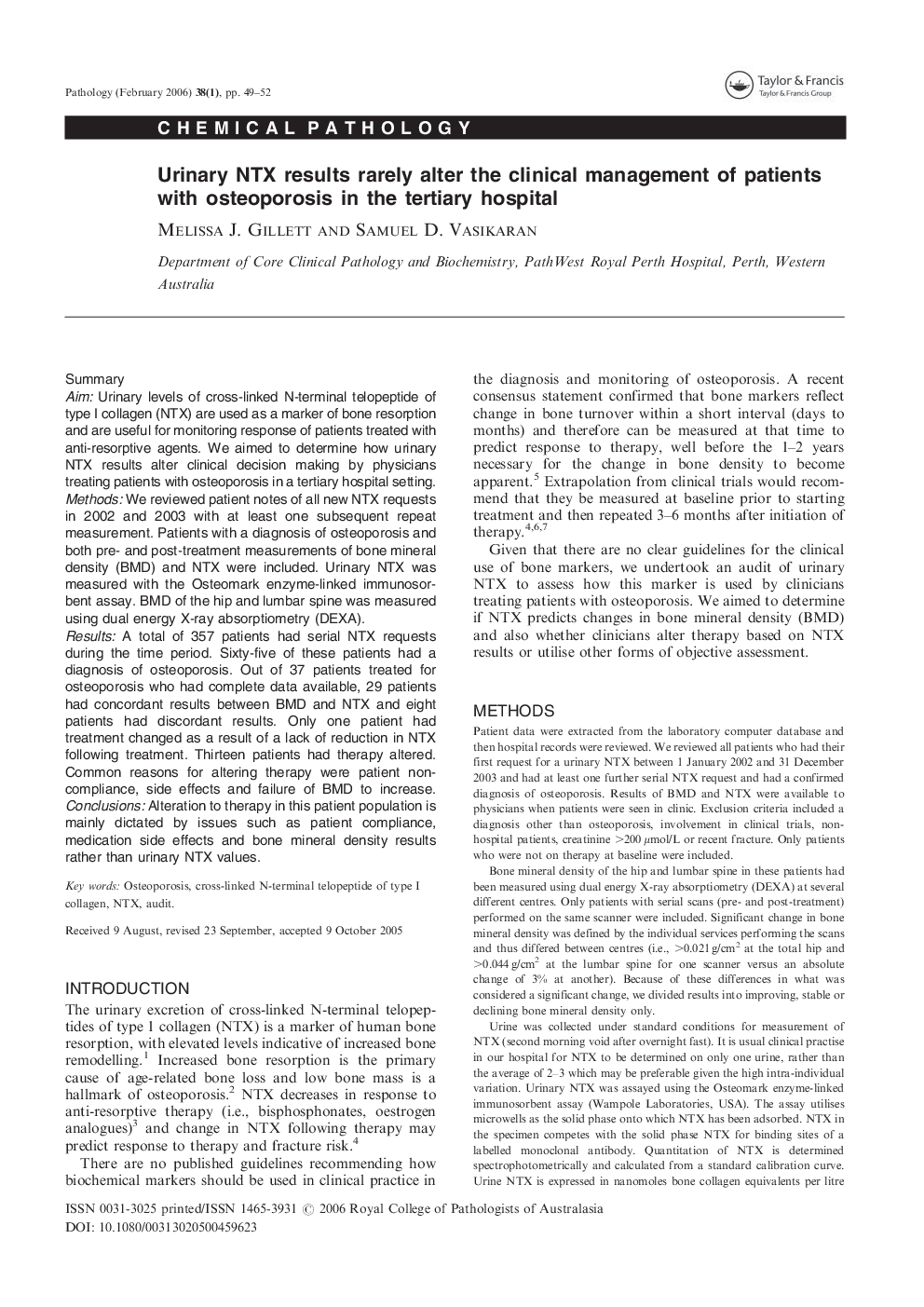| Article ID | Journal | Published Year | Pages | File Type |
|---|---|---|---|---|
| 106452 | Pathology | 2006 | 4 Pages |
SummaryAimsUrinary levels of cross-linked N-terminal telopeptide of type I collagen (NTX) are used as a marker of bone resorption and are useful for monitoring response of patients treated with anti-resorptive agents. We aimed to determine how urinary NTX results alter clinical decision making by physicians treating patients with osteoporosis in a tertiary hospital setting.MethodsWe reviewed patient notes of all new NTX requests in 2002 and 2003 with at least one subsequent repeat measurement. Patients with a diagnosis of osteoporosis and both pre- and post-treatment measurements of bone mineral density (BMD) and NTX were included. Urinary NTX was measured with the Osteomark enzyme-linked immunosorbent assay. BMD of the hip and lumbar spine was measured using dual energy X-ray absorptiometry (DEXA).ResultsA total of 357 patients had serial NTX requests during the time period. Sixty-five of these patients had a diagnosis of osteoporosis. Out of 37 patients treated for osteoporosis who had complete data available, 29 patients had concordant results between BMD and NTX and eight patients had discordant results. Only one patient had treatment changed as a result of a lack of reduction in NTX following treatment. Thirteen patients had therapy altered. Common reasons for altering therapy were patient noncompliance, side effects and failure of BMD to increase.ConclusionsAlteration to therapy in this patient population is mainly dictated by issues such as patient compliance, medication side effects and bone mineral density results rather than urinary NTX values.
